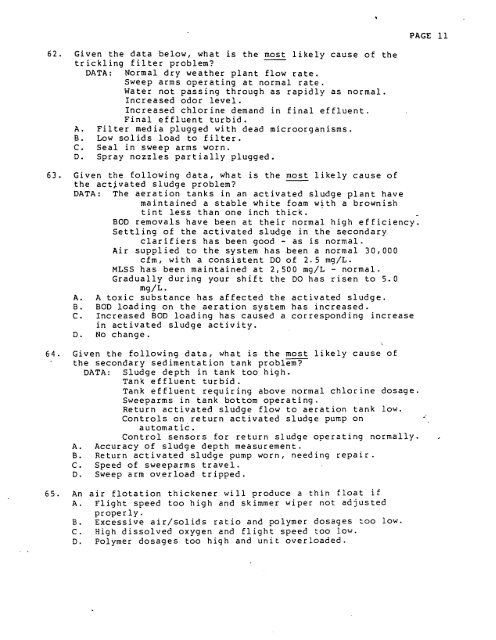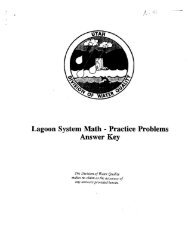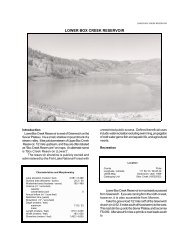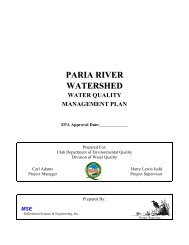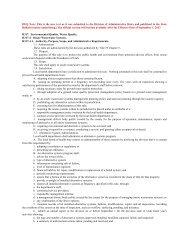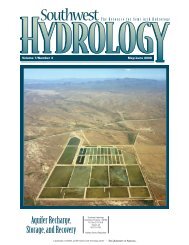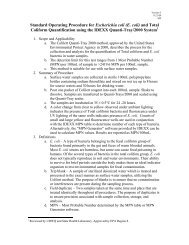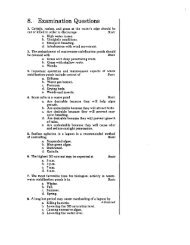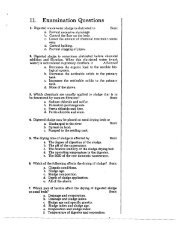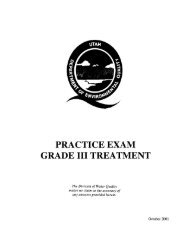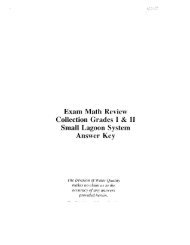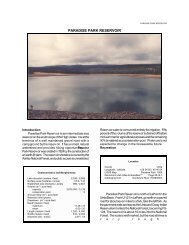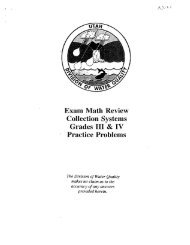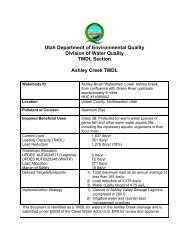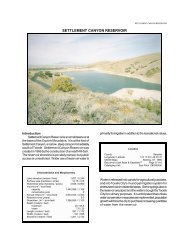Practice Exams Grade II Treatment - Division of Water Quality
Practice Exams Grade II Treatment - Division of Water Quality
Practice Exams Grade II Treatment - Division of Water Quality
You also want an ePaper? Increase the reach of your titles
YUMPU automatically turns print PDFs into web optimized ePapers that Google loves.
PAGE 1162. Given the data below, what is the most likely cause <strong>of</strong> thetrickling filter problem?DATA: Normal dry weather plant flow rate.Sweep arms operating at normal rate.<strong>Water</strong> not passing through as rapidly as normal.Increased odor level.Increased chlorine demand in final effluent.Final effluent turbid.A. Filter media plugged with dead microorganisms.B. Low solids load to filter.C. Seal in sweep arms worn.D. Spray nozzles partially plugged.63. Given the following data, what is the most likely cause <strong>of</strong>the activated sludge problem?DATA: The aeration tanks in an activated sludge plant havemaintained a stable white foam with a brownishtint less than one inch thick. .BOD removals have been at their normal high efficiency.Settling <strong>of</strong> the activated sludge in the secondaryclarifiers has been good - as is normal.Air supplied to the system has been a normal 30,000cfm, with a consistent DO <strong>of</strong> 2.5 mg/L.MLSS has been maintained at 2,500 mg/L - normal.Gradually during your shift the DO has risen to 5.0mg/L.A. A toxic substance has affected the activated sludge.B. BOD loading on the aeration system has increased.C. Increased BOD loading has caused a corresponding increasein activated sludge activity.D. No change.64. Given the following data, what is the most likely cause <strong>of</strong>the secondary sedimentation tank problem?DATA: Sludge depth in tank too high.Tank effluent turbid.Tank effluent requiring above normal chlorine dosage.Sweeparms in tank bottom operating.Return activated sludge flow to aeration tank low.Controls on return activated sludge pump onautomatic.Control sensors for return sludge operating normally.A. Accuracy <strong>of</strong> sludge depth measurement.B. Return activated sludge pump worn, needing repair.C. Speed <strong>of</strong> sweeparms travel.D. Sweep arm overload tripped.65. An air flotation thickener will produce a thin float ifA. Flight speed too high and skimmer wiper not adjustedB.properly.Excessive air/solids ratio and polymer dosages too low.C. High dissolved oxygen and flight speed too low.D. Polymer dosages too high and unit overloaded.


